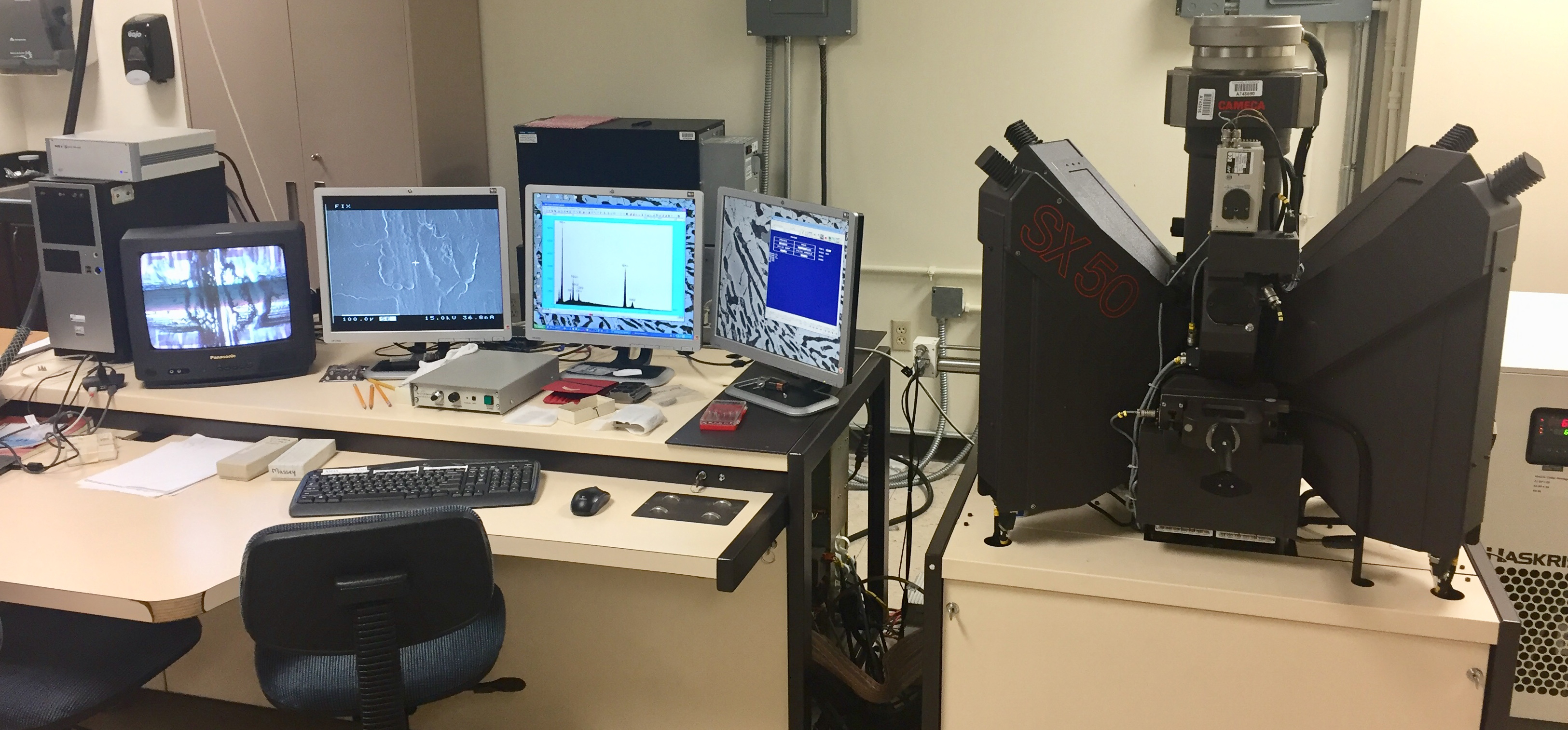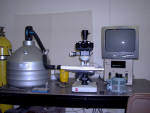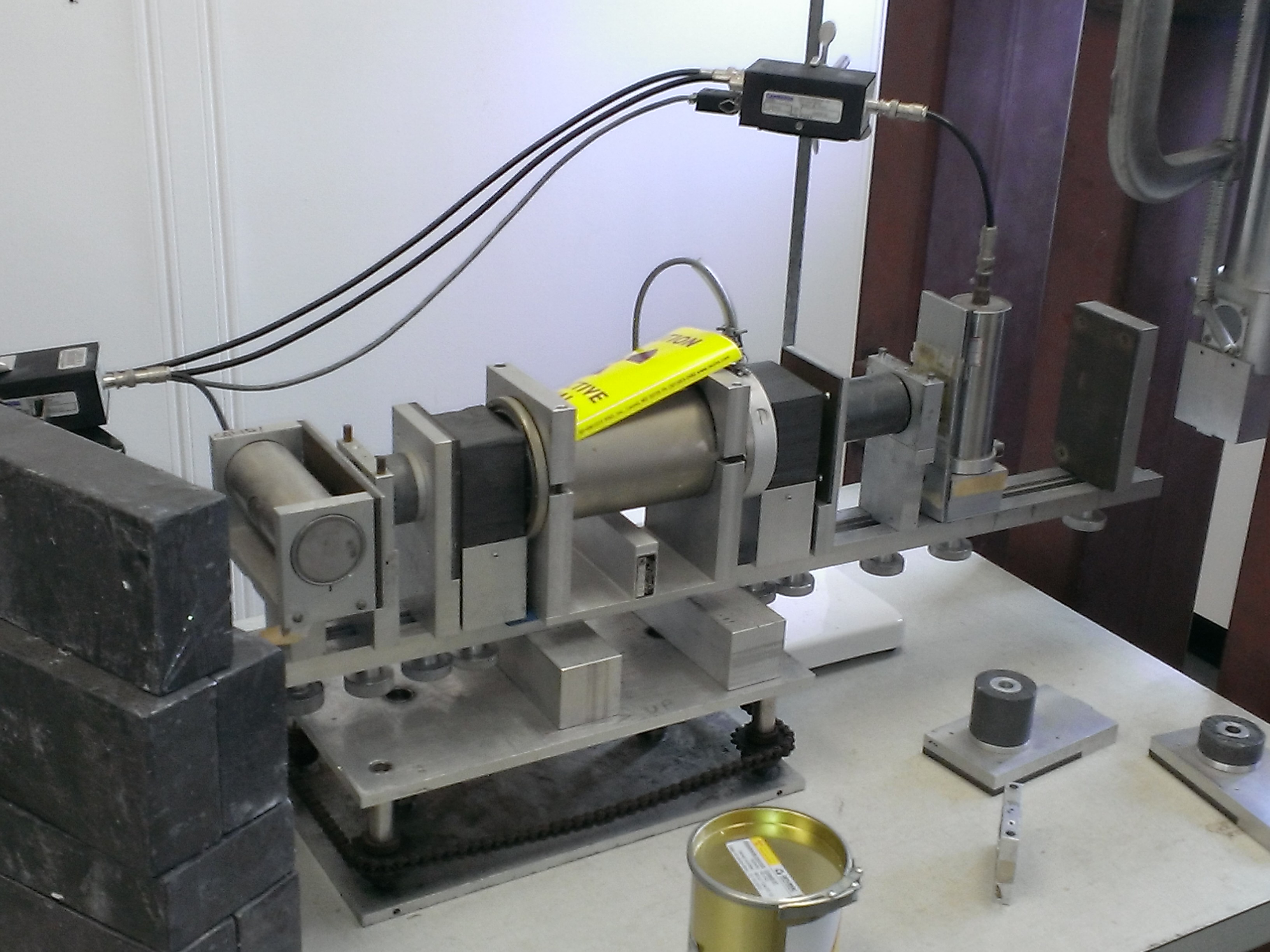Kentucky Stable Isotope Geochemistry Lab (Dr. Andrea Erhardt)
The Department of Earth and Environmental Sciences at the University of Kentucky has established a state-of-the-art stable isotope geochemistry lab that houses three isotope ratio mass spectrometers (two ThermoFinnigan DELTAplus XPs and one MAT 253) with associated peripheral devices (two EAs, TC/EA, GasBench, GC-C/TC, dual inlet) for the elemental and isotope analysis (N, C, H, O, S) of solids, liquids and gases, and two laser spectrometers (a Los Gatos Research TLWIA-45-EP for simultaneous measurement of δ2H, δ17O, and δ18O in liquids, and a Picarro G1101-I for continuous measurement of δ13C in atmosphere or gas samples). The lab also contains equipment for the preparation of samples for elemental and stable isotope analysis (e.g. computer driven micro-drill; various petrographic microscopes with CL and epi-fluorescence capabilities; cryogenic grinders; auto-titrators; rotary evaporators; freeze driers; various centrifuges; organics and inorganics laminar flow hoods; autoclave; incubators; ultra-cold storage; micro-balances; and other ancillary wet chemistry equipment). The lab performs analyses for researchers within the university community as well as external clients.
isotopes.as.uky.edu
Electron Microprobe Lab (Prof. David Moecher)
The CAMECA SX50 electron probe micro-analyzer at UK is a fairly standard “microprobe”, capable of obtaining rapid, nondestructive quantitative micron-scale analysis of solid materials consisting of the elements carbon through uranium. The instrument has four wavelength dispersive spectrometers for quantitative analysis; a silicon-drift detector used mainly for rapid semi-quantitative analysis via energy dispersive spectrometry; a KE Designs cathodoluminescence (CL) detector for imaging micron-scale compositional zoning in zircon and calcite; and a secondary (SE) and backscattered electron (BSE) detector for compositional and textural imaging. We use the SAMx automation for WDS and EDS, and for imaging purposes. We mostly analyze minerals in rocks, but we also analyze alloys, semiconductors, ceramics (modern and archeological), and glasses. The sample holder can accommodate standard petrographic thin sections and 1” diameter round samples.

The instrument is made available to the entire academic community at UK (Engineering, KGS, Anthropology, Physics). We have had visiting students and faculty from the University of Cincinnati; Syracuse, Auburn, and Miami Universities; Murray State, Western and Eastern Kentucky Universities. Interested users should contact Dave Moecher (moker@uky.edu).
The Department of Earth & Environmental Sciences manages a JEOL IT-100 scanning electron microscope (SEM) for student and faculty research on solid earth materials. The SEM is equipped with secondary, backscattered, and cathodoluminescence detectors, and a solid-state energy dispersive spectrometer for chemical analysis of solid earth materials. Outside users (other departments at UK, outside universities, high schools) are welcomed to use the instrument. UK also manages a larger research facility with multiple higher resolution electron microscopes (emc.engr.uky.edu/).
Sedimentary, Environmental and Radiochemical Research Lab (SER2L): (Prof. Kevin Yeager)
SER2L maintains state-of-the-art analytical instrumentation and comprehensive environmental field sampling equipment:
(5) Canberra gamma spectrometers, HPGe well detectors and MCA, models 747 and DSA‐1000
12 Detector Canberra alpha spectrometer, model 7404 with Canberra MCA, model 8224 and Canberra integrated alpha spectrometer system
Malvern Mastersizer, model S2000 laser‐optical particle size characterization system
Olympus SZX16 Research High-Class Stereo Microscope with an Olympus DP26 5 megapixel camera
Allegra® X-14 Series Benchtop Centrifuge, Retsch Mortar Grinder
Interested users should contact Prof. Kevin Yeager (kevin.yeager@uky.edu).
Other Departmental geochemical and mineralogical facilities:
- Automated Rigaku X-ray diffractometer (Prof. Dave Moecher)
- Mössbauer Spectroscopy- To examine the valence state of iron (Prof. Dave Moecher)
- Fluid inclusion laboratory
The Fluid inclusion laboratory consists of a U.S.G.S. heating-cooling stage mounted on a Leitz microscope with digital camera attachment and video monitor. Temperatures are calibrated using experimental standards.


Geophysics facilities:
- the University of Kentucky Digital Seismic Network, including a regional strong-motion and seismic monitoring network (comprised of 15 short/intermediate period seismometers and 10 strong-motion accelerometers), concentrated on the New Madrid Seismic Zone (Dr. Zhenming Wang).
- the UK Department of Earth and Environmental Sciences Seismic Lab including equipment for near-surface exploration and engineering seismology (Prof. Ed Woolery).
- the UK Geophysics Lab includes gravity, magnetic, frequency domain electromagnetic equipment and software for regional, near-surface environmental, and archaeological investigations (Prof. Dhananjay Ravat).
Additional facilities:
- General wet chemistry laboratories
- Rock cutting and crushing facilities; Frantz magnetic separator
- Computer mapping and image processing laboratories
- UK's supercomputing facilities
- Student microcomputer laboratory with networked PCs and Macs
- Field vehicles
- UK Science Library, including the Pirtle Geologic Map Library

